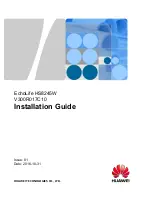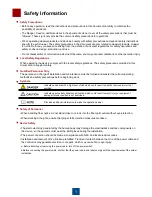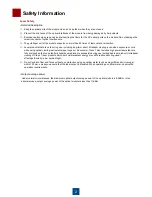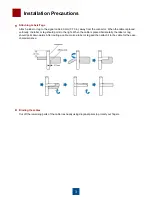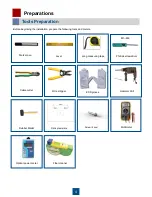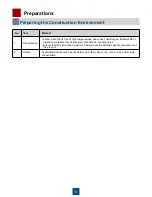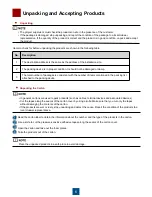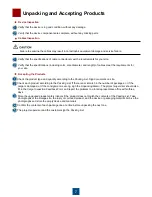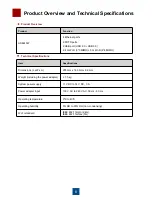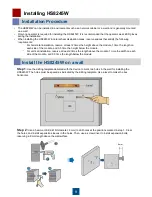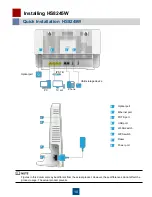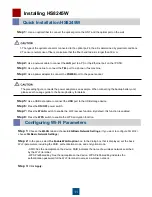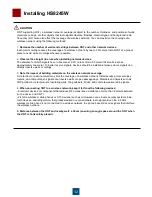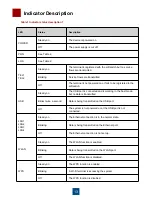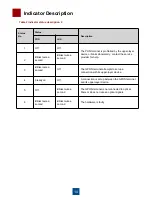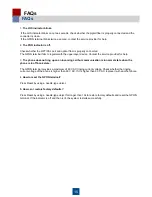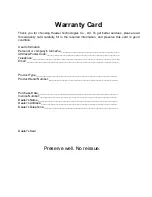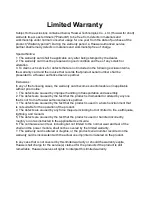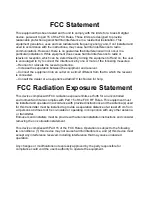
12
Installing HS8245W
ONT supporting Wi-Fi, a wireless network coverage is subject to the number, thickness, and positions of walls,
materials, ceilings, or other objects that radio signals traverse. Besides, material type and background radio
frequency (RF) noise also affect the coverage of a wireless network. You can maximize the coverage of a
wireless network using the following methods:
1.
Decrease the number of walls and ceilings between ONT and other network devices.
Each wall or ceiling reduces the coverage of a wireless network by one to 30 meters. Install ONT at a proper
place to avoid walls or ceilings whenever possible.
2.
Observe the straight line rule when installing network devices.
The distance for which signals have to traverse at a 45
corner of two 0.5 meter-thick walls reaches
approximately one meter. To better receive signals, devices should be installed at places where signals can
directly traverse walls or ceilings.
3.
Note the impact of building materials on the wireless network coverage.
A metal door or aluminum wall may limit the coverage of a wireless network. Install access points, wireless
routers, and computers, so signals can traverse walls or open passageways. Materials and objects such as
FRP products, metal products, insulating walls, filing cabinets, bricks, and concrete weaken radio signals.
4.
When connecting ONT to a wireless network, keep it far from the following devices:
- Electronic devices or components that produce RF noises (keep a distance of more than 2 meters between
such a device and ONT.)
- 2.4 GHz wireless mobile phones or X-10 devices (such as microwave ovens, home security systems, blue-
tooth devices, and refrigerators) that greatly weaken or even eliminate radio signals. Even if a 2.4 GHz
wireless mobile phone is not connected to a wireless network, the phone base still sends signals that interfere
the wireless network.
5.
Distance between the ONT and nearby wall: ≥ 30 cm (ensuring enough space around the ONT when
the ONT is horizontally placed).

